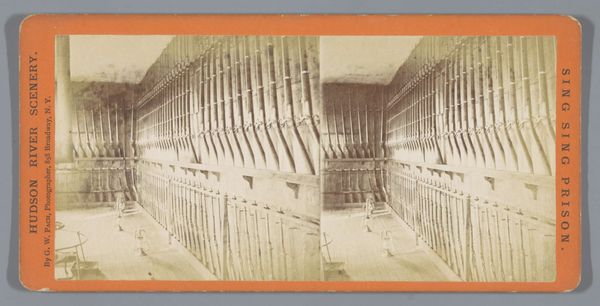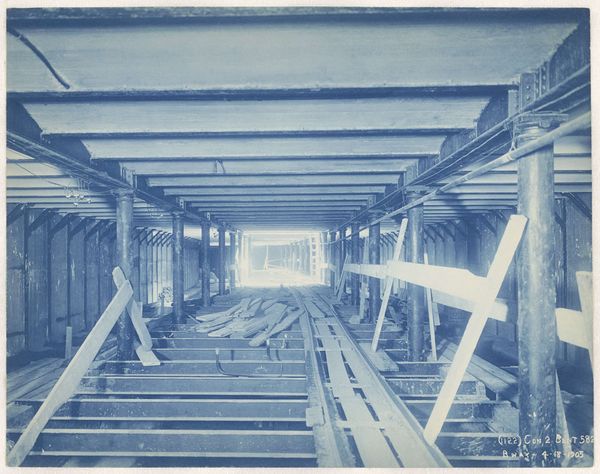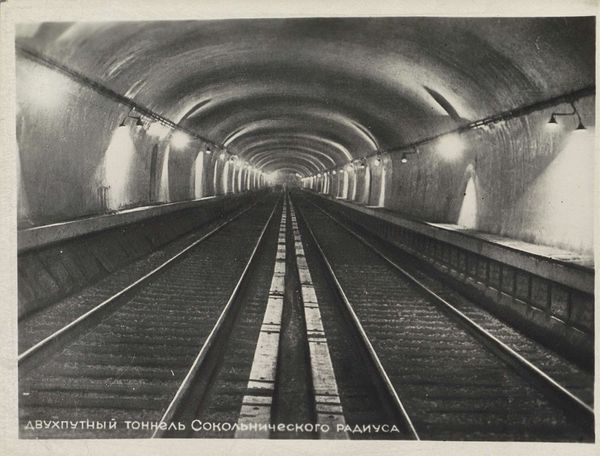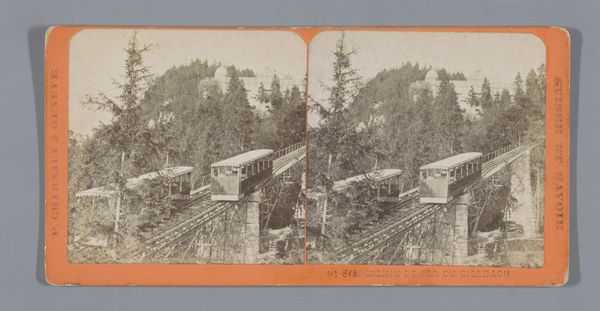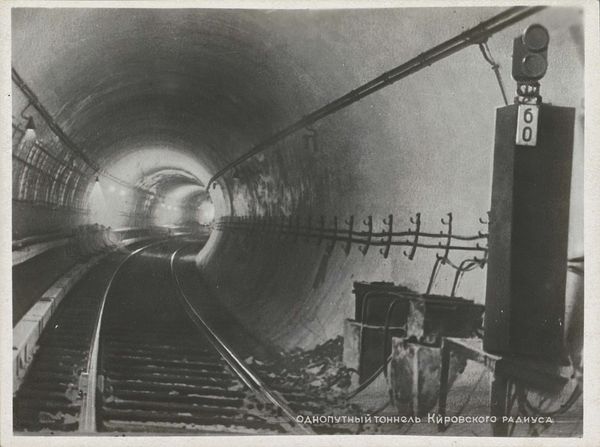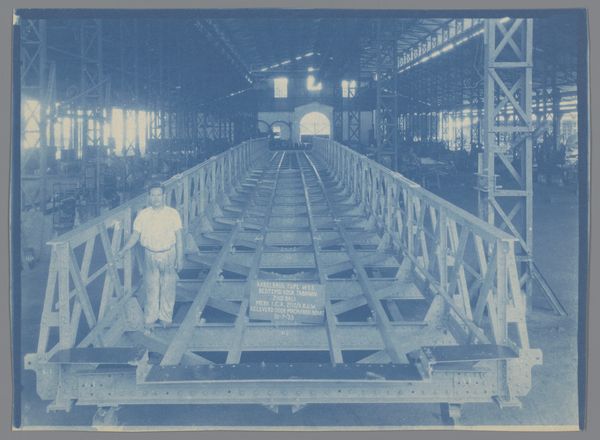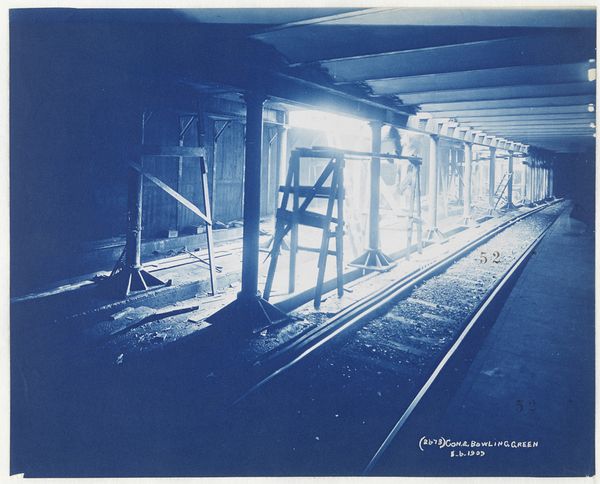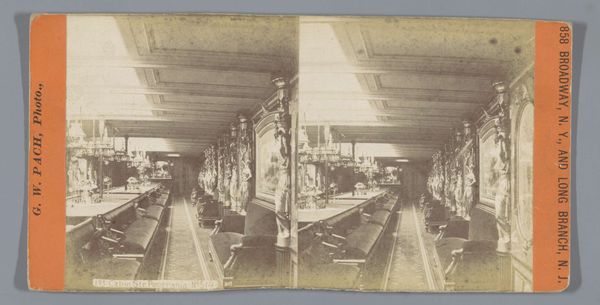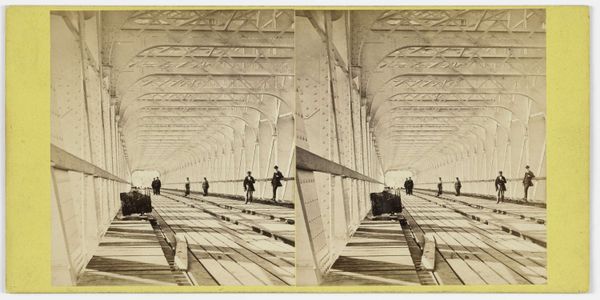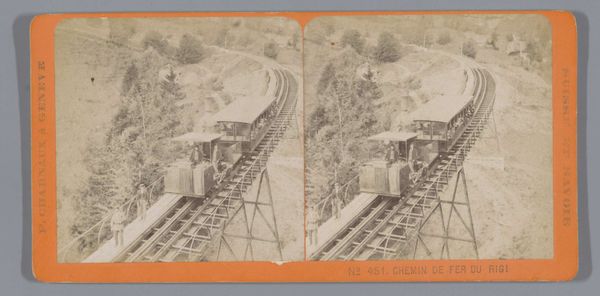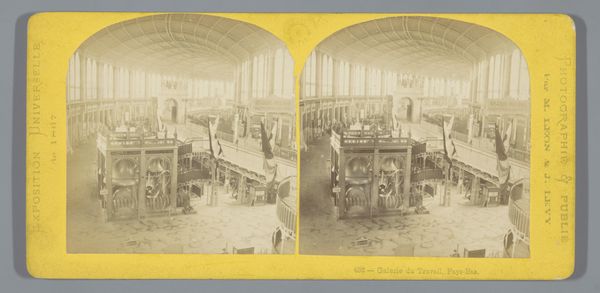![[Group of 3 Stereograph Views of Bridges and Railways at Niagara] by American Scenery](/_next/image?url=https%3A%2F%2Fd2w8kbdekdi1gv.cloudfront.net%2FeyJidWNrZXQiOiAiYXJ0ZXJhLWltYWdlcy1idWNrZXQiLCAia2V5IjogImFydHdvcmtzL2Y2ZjQ1MDhkLWQ3NTctNDc3My1iNTljLTlmN2RjMjcwNmMxZS9mNmY0NTA4ZC1kNzU3LTQ3NzMtYjU5Yy05ZjdkYzI3MDZjMWVfZnVsbC5qcGciLCAiZWRpdHMiOiB7InJlc2l6ZSI6IHsid2lkdGgiOiAxOTIwLCAiaGVpZ2h0IjogMTkyMCwgImZpdCI6ICJpbnNpZGUifX19&w=3840&q=75)
[Group of 3 Stereograph Views of Bridges and Railways at Niagara] 1860 - 1899
0:00
0:00
print, photography
#
toned paper
# print
#
landscape
#
photography
#
geometric
#
cartoon carciture
Dimensions: Mounts approximately: 8.9 x 17.8 cm (3 1/2 x 7 in.)
Copyright: Public Domain
Curator: Looking at this stereo photograph, I am struck by the powerful illusion of depth—it almost pulls you in! Editor: I feel a definite tension in this image—a somewhat uneasy mix of industrial progress and the natural sublime. Curator: Exactly. This work is titled "[Group of 3 Stereograph Views of Bridges and Railways at Niagara]", dating roughly between 1860 and 1899. These prints, part of the "American Scenery" series, capture Niagara Falls not just as a natural wonder but also as a site of technological intervention. Editor: It's fascinating to see how the railway structure seems to both dominate and integrate itself into the landscape. I am wondering about who had access to such scenes, to such views of technological innovation? These were not neutral landscapes. The railways brought new waves of visitors. I think here about questions of race and class that are surely present but remain unseen. Curator: A pertinent question, indeed. These stereographs, mass-produced for the middle class, served as both entertainment and education, creating shared visual experiences and national identity. Consider, too, how landscape photography, in the mid-19th century, often reinforced the idea of American progress and Manifest Destiny. Editor: The geometric precision of the tracks against the potential chaos of Niagara generates a particular ideology. In effect, technological “advancement” often disrupts existing modes of living while benefitting a select few. I wonder, where are the Native people within the grand narrative being crafted in this particular piece? Curator: Certainly, understanding these photographs necessitates grappling with the legacy of colonization. And the ways in which natural resources and territories have been exploited in the name of economic and national progress. Editor: What lingers for me is the unsettling reality beneath this aestheticization. It invites critical questioning about what stories we tell, whose voices are prioritized, and what histories get buried beneath layers of “progress.” Curator: Your emphasis on these hidden narratives, particularly regarding power dynamics, provides a necessary counterbalance. For me, though, it's important to appreciate the technological achievements—even while staying aware of their complicated histories. Editor: The intersection between industry, leisure, and landscape it captures has undoubtedly provided new points of access that invite us to ask, “Whose stories are not yet told here?”
Comments
No comments
Be the first to comment and join the conversation on the ultimate creative platform.

